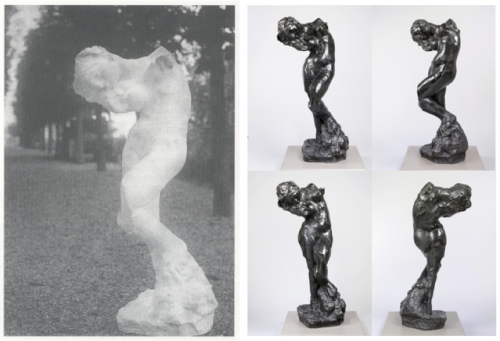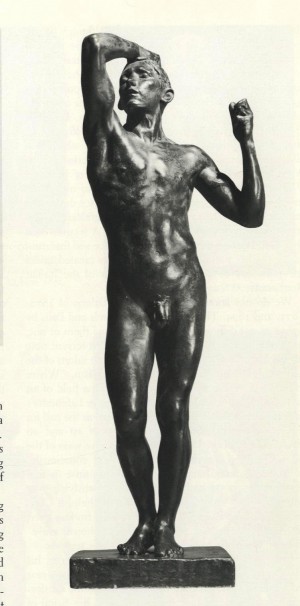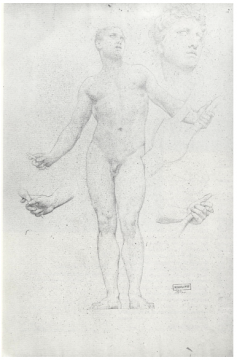With the taught portion of my Courtauld MA degree in Art History concluded (the final exam completed last week), it’s now time to start thinking of dissertation topics and plunge into the final 10,000 words and final three months of my graduate degree. With this last stage at hand, I have had much time to reflect and wish to consider the importance and utility of the topics selected for papers and presentations in the field of Art History. Are these expositions merely personal intellectual indulgences? Is intellectual exploration more useful when placed within the cannon of academic thought around a specific topic? Is practicality/applicability even a valid consideration? These are questions that always seem to creep into my mind whenever I embark on a new scholarly endeavour bridging my love of art and writing within the discipline of Art History.
Over the past five and a half months, I’ve written two extended essays and given three presentations on different topics. My first presentation was more of an assignment working with a set bibliography and a given work of art: I compared Walter Benjamin’s The Work of Art in the Age of Mechanical Reproduction and Auguste Rodin’s The Age of Bronze (1876). The resulting presentation unfolded the complexities of sculptural practice (modeling, replicating, founding) in light of ideas of reproduction/copy. Considered in a nineteenth-century context, ideas of the original and the copy were not at all straightforward, as emulation was an acceptable (and indeed commonplace) exercise for artists. Concepts of authorship remain clouded even today, as the debate continues.

Stephen Haweis and Henry Coles, "Rodin's Meditation in the Garden at Meudon," 1903-4; Auguste Rodin, "The Inner Voice (The Muse)," 1896.
This presentation led to the development of a paper exploring a cross-media comparison between a photograph of Rodin’s The Inner Voice (also called The Muse, and Meditation; 1896) and the actual sculpture on display at The Victoria & Albert Museum. I was drawn to the idea of translating one medium into another and thus considered the comparison using the philosophical ideas of translation from Walter Benjamin. The resulting paper was a challenging piece of theoretically complex writing, yet ultimately was also a rewarding experience and perhaps the best piece of writing I have completed to date. Exploring Rodin’s stages of creation, molding an idea, a shape, parsing the meaning, I myself undertook the same process in my writing, encircling an idea, sculpting the meaning. The written project became an artistic work in its own right, exemplifying its object of study.

Théophile Poilpot, Etude anatomique d'après "L'Enlevement des Sabines" de David (Anatomical study after "The Rape of the Sabine Women" by David), c. 1870.
Since then, I have gone on to give a presentation on the layered social relationships present within the nineteenth-century studio environment. I have subsequently presented the figure of the flayed body within artistic practice of the nineteenth century, considering the boundary of the skin and what it means to examine what lies beneath (in terms of anatomy and artistic construction). My last paper examined a case study of a monumental ceiling painting by William Bouguereau and its preparatory works to explore the relationship between artist and the Ideal, both in his idealization of the model as well as his aspirations to join the greats of Art History.
These presentations and papers, I admit, don’t have universal appeal. Regular museum-goers will not seek out my academic productions. The topics I pick most often are subjects of personal fascination exploring ideas activated within interesting poetic and intellectual spaces. Utility really does not have its place with relation to art historical papers; like any writing, these expositions present an unfolding of ideas, of a personal voice. Some of the best writing – like some of the best art – does, in its own way, incite reflection on contemporary life. With these topics we select and explore in our ivory towers, our intellectual hovels, I think there is always a multiplicity of intentions at work. As I prepare for my dissertation, I believe several forces are equally at work too. I am trying my best to temper my personal interests and inclinations within the context of previous scholarship all while exploring new (albeit sometimes obscure) grounds of research. Ultimately it is about space; exploring the gaps and filling in the historical spaces in order to present a more multifaceted view of the works of art in question. The piece of writing itself, with its rhetorical structure and finesse of language, can also become a personal intellectual creation, one to stimulate thoughtful enjoyment and scholarly debate.






